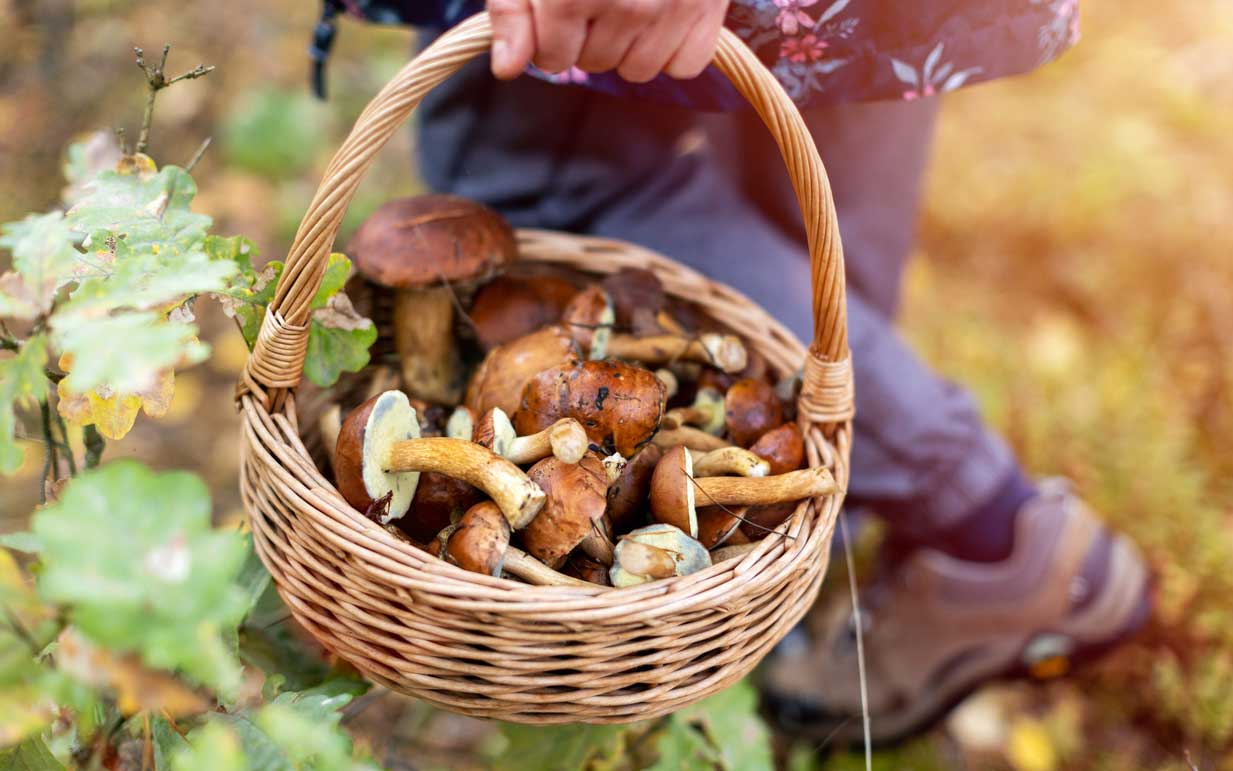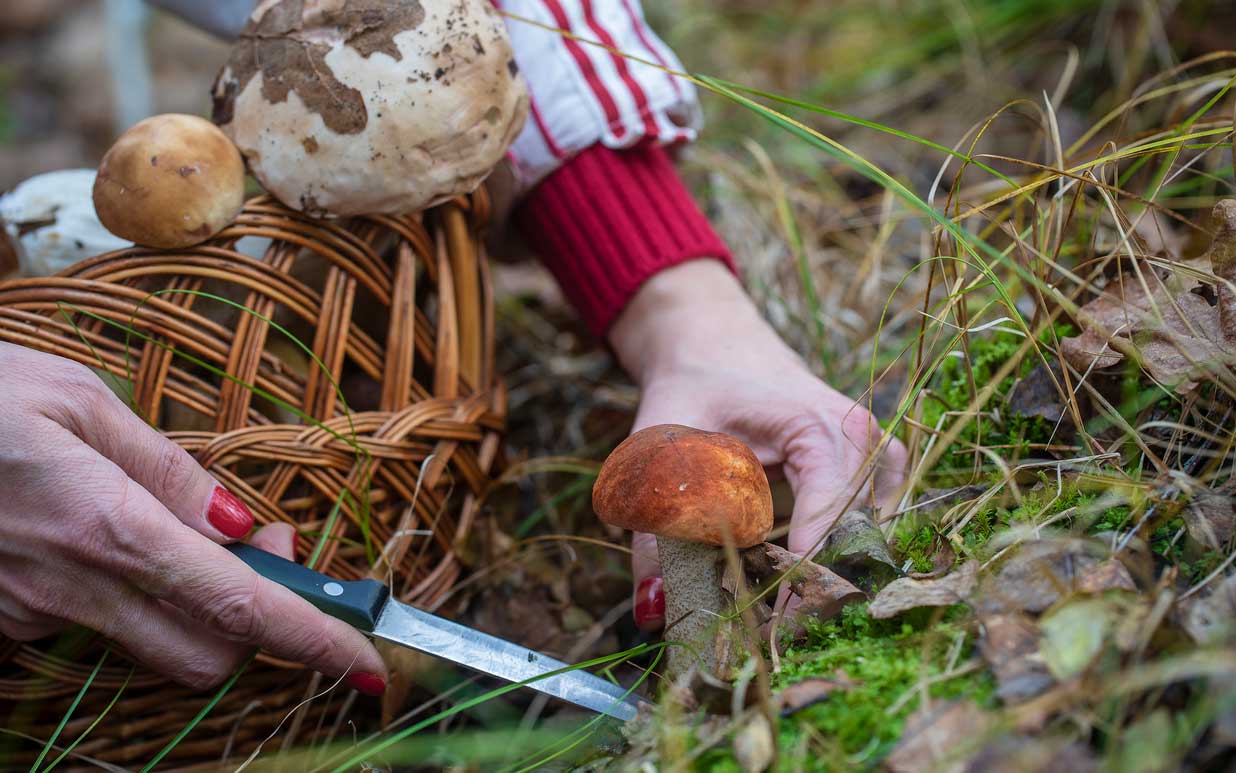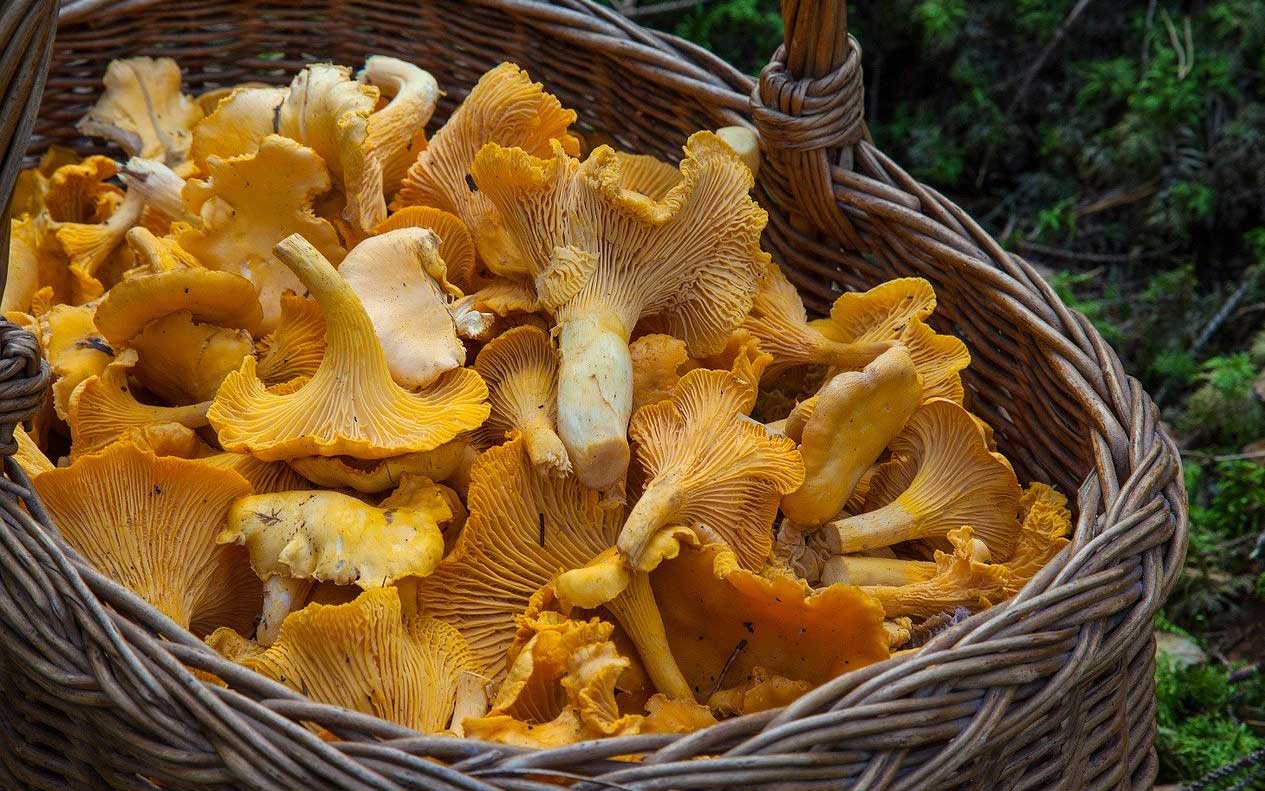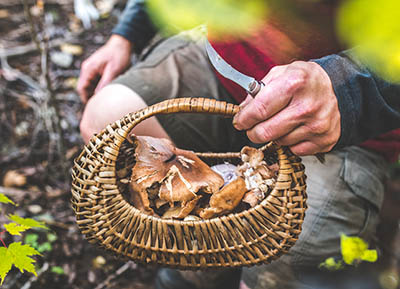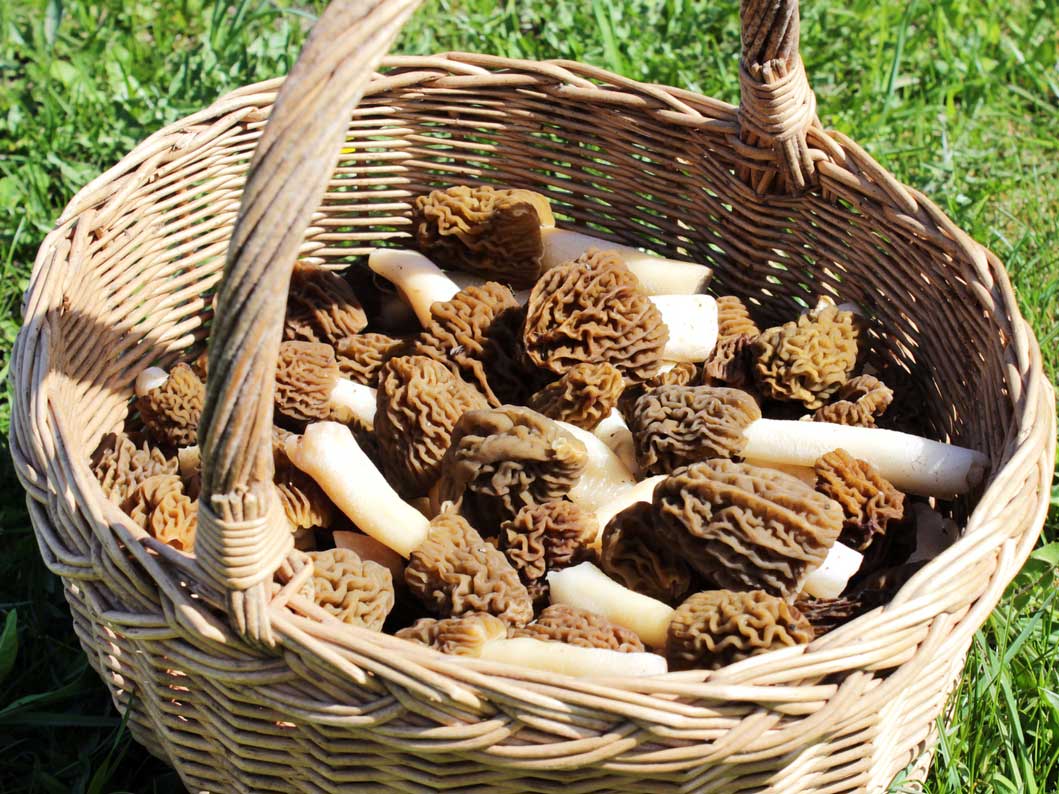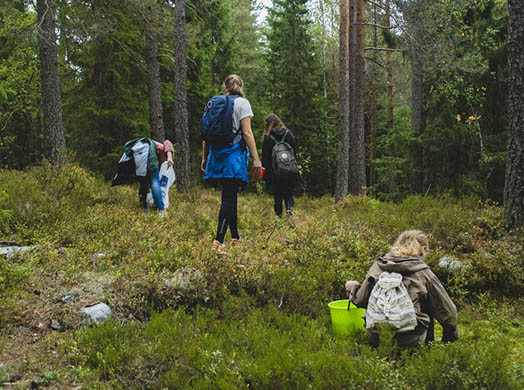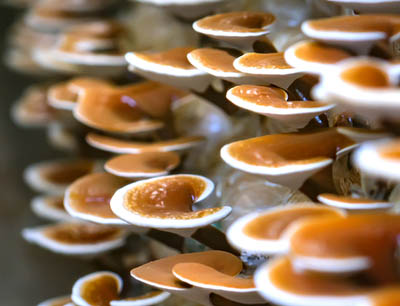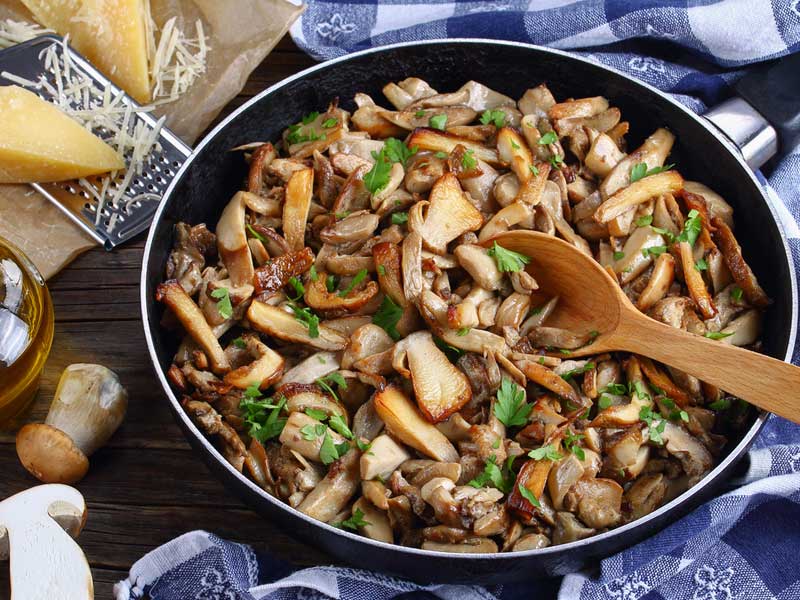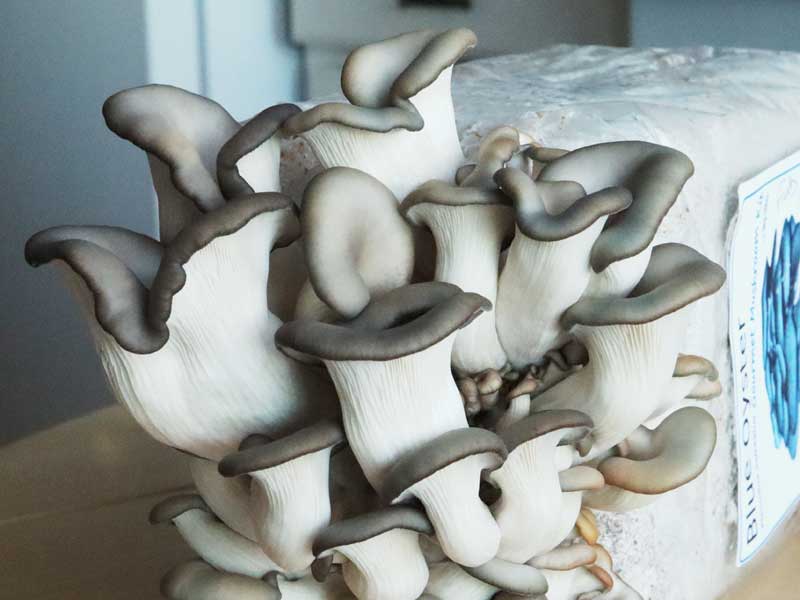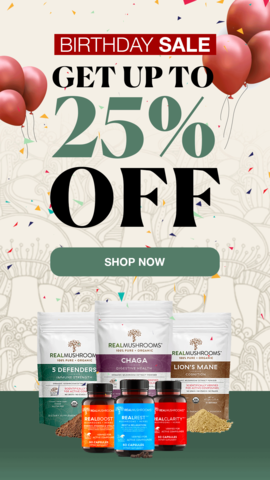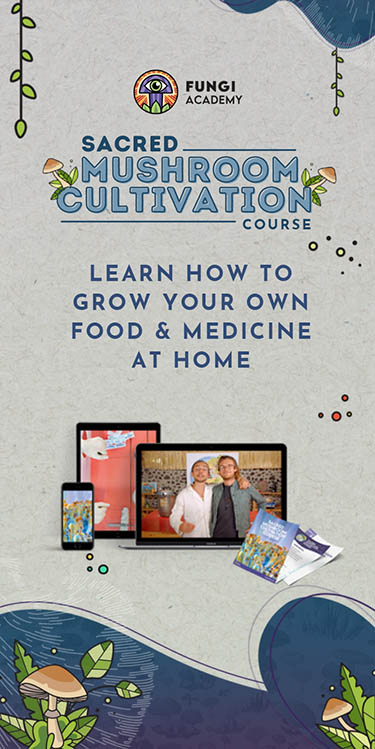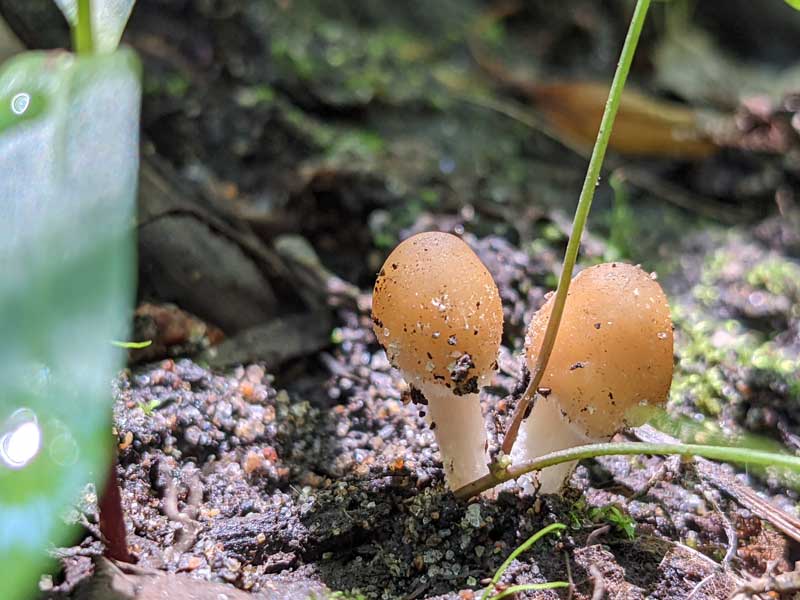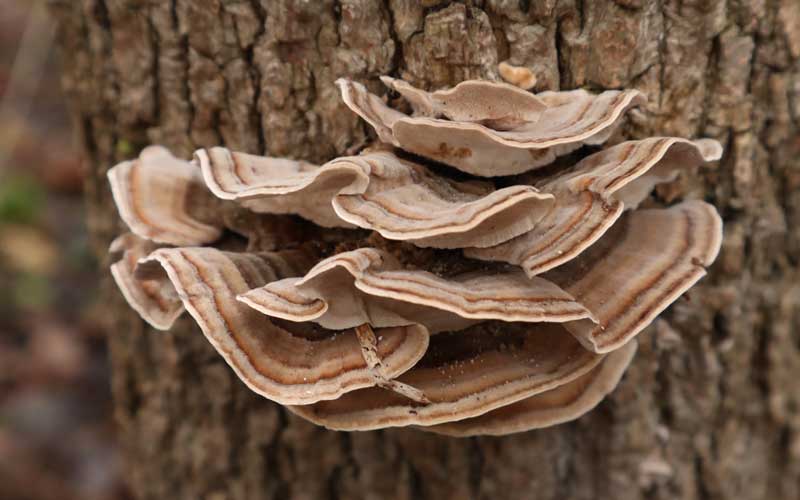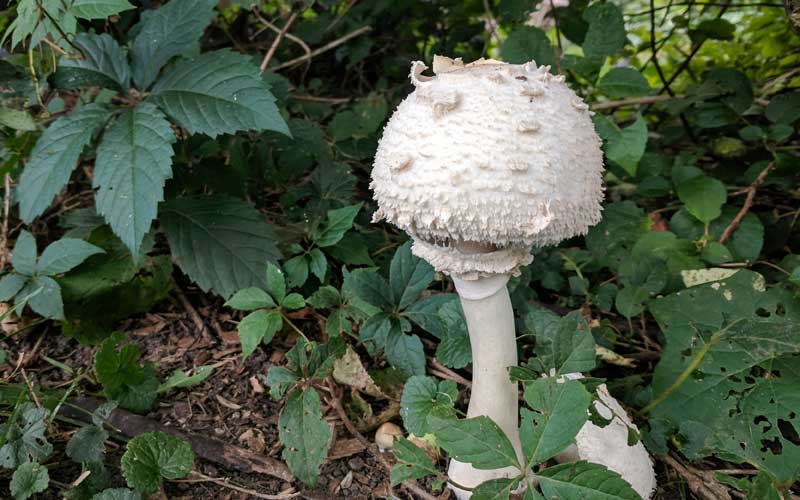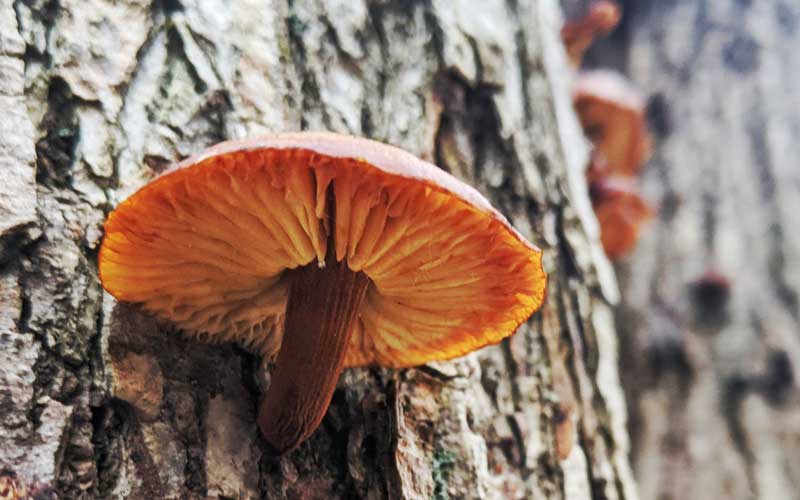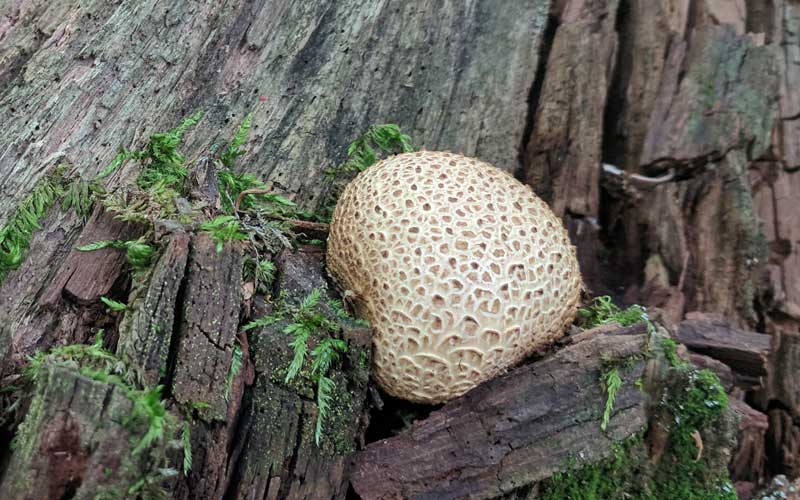- Home
- Find Mushrooms
- Foraging
Mushroom Foraging – Gathering your own wild mushrooms.
Some people enter a forest with their eyes up, admiring the blue sky and the way the sunlight dapples through the trees, taking in the trees, rock formations, and streams.
Mushroom foragers are different.
They wander off trails to places where mushrooms are likely to grow. The keep their eyes down, scanning the forest floor. Or they study tree trunks looking for mushrooms growing there.
Sometimes you may even find them down on hands and knees, harvesting an edible wild mushroom and then doing a sweep of the area for more.
Why would anyone spend their time with their eyes to the ground, potentially missing so much of the natural beauty around them?
Lots of reasons, actually…
The pleasures of becoming a mushroom forager.
When you forage for mushrooms, it takes you into the great outdoors, but in a new way. Foraging takes you off the usual trails. Sure you may find mushrooms growing along the places that people usually walk, but often the best mushrooms sites are hidden away.
They take some work to find.
In the process of finding them, you’ll get to know your nearby wild places in a way that most people never get to. You’ll discover the thrill of venturing off the path, of finding places that maybe no one has ever laid eyes but you.
Foraging requires physical exercise — something most of us could us a little more of. Mushrooms grow at different elevations during different times of the year. That means you’ll need to spend some time moving up and down the sides of mountains and hills.
You’ll also need to use your wits. Not only do you have to think about where a mushroom might grow and then search for such a place. You have to stay focused, taking in the details of your surroundings in a way that many people never do. And, you have to study up a bit.
Successful foraging — meaning you find tasty, edible mushrooms and avoid the poisonous kind — requires you to learn about the wild mushrooms in your region that are good to eat. You have to learn the local trees and which ones support the kinds of mushrooms you’re after. You have to learn how the mushrooms like to grow — do they grow on dead trees, at the base of specific trees, on the trunk of trees, in well-drained soil, in moist cool soil? You have to learn about mushroom sizes and shapes. About their colors. About their stems and gills (if they even have gills) and spore prints.
And you have to know how to identify poisonous mushrooms that are easily mistaken for the ones you’re trying to gather.
A lot goes into identifying a safe-to-eat mushroom. But that makes the experience all the more rewarding.
How to get started as a wild mushroom forager.
A lot of people never even consider foraging for mushrooms because they fear harvesting and eating a poisonous mushroom.
That’s a reasonable fear. Thousands of people ever year in the U.S. eat mushrooms that are toxic. Fortunately, the vast majority of them only have to endure some temporary discomfort before making a full recovery. But each year, two to three people die from eating poisonous mushrooms. And a few more than that land in the hospital, possibly in need of liver transplant.
So mushroom safety is serious business.
But, if you take the time to learn the craft and follow a few commonsense precautions, hunting for wild mushrooms is very safe.
The first thing you’ll need to get started is a regional guide to edible wild mushrooms. Make sure you find one that also includes the toxic mushrooms in your region, especially the ones that are easily mistaken for edibles. If you want to positively identify a safe-to-eat mushroom, you also need to be able to positively identify the ones that are not safe.
A few other items that will make your mushroom hunt enjoyable are a small wicker basket or mesh bag, a knife, a small trowel, and a soft brush.
Mushroom foragers favor the wicker basket or mesh bag because it allows their harvest to disperse spores as they walk — more future mushrooms. The knife can be used for cutting mushrooms. The trowel can be used for gently digging a mushroom out of the ground from its base — sometimes important for making a positive ID. And then the brush gives you a way to remove dirt from the mushrooms you’ve collected — less cleaning to do at home. Finally, bring a notebook and a smartphone for taking notes and pictures.
A compass and map can help you find areas you’d like to explore for mushrooms — and then find your way back to the trail again. Bug spray, plenty of water, some sunscreen, and a snack will round out your hunting supplies.
Don’t worry about finding a meal’s worth of mushrooms.
Once you have your field guide, pick a one or two mushrooms that you’d like to begin with — it makes sense to start with those that are easiest to identify — and find a few likely spots where you can go foraging. You could head up to the mountains or you could even try visiting a local park or riverside.
Make sure you pick a time of year when the temperature and conditions are right for your target shrooms. And don’t get frustrated if you don’t find anything. Some days foragers find a basketful of mushrooms. Other days they find nothing at all.
Either way, the time outside and the possibility of finding and identifying some mushrooms are enjoyable for their own sake.
During your first mushroom foraging trips, focus on identifying mushrooms rather than harvesting them for food. By all means, pick a few of each type of mushroom you find.
When you pick your mushrooms, take notes on where they were growing. Snap a picture or two of the mushroom up close. And then, if it’s growing at the base of tree, take a picture of the tree. If you know the species of tree, put that down in your notebook.
When you take them home, take time to study each species you collected. Note its:
- Size
- Coloring
- Cap shape
- Stem shape, particularly at the base and where it connects to the cap
- Gills or ridges or pores on the underside of its cap
- Texture — soft, leathery, sticky?
- Smell — some mushrooms have a very distinctive smell that your field guide will describe
- Cross section — when cut in half, is it lighter-colored on the inside, cottony, woody, hollow?
- Spore print — put a mushroom cap on a piece of paper and place a jar over it. After a few hours, remove the jar and cap to see what color spores the mushroom has
Based on everything you see, and with the help of your field guide, determine the type of mushroom you’ve found.
Then, find a way to verify you’re correct.
If you have an experienced mushroom-foraging friend, check with them to see how you did.
If you don’t have an experienced forager in your life, consider joining a chapter of the North American Mycological Association (NAMA). Chances are you’ll meet someone there who would be happy to confirm or correct your mushroom identifications.
If you live outside of North America, do a quick Google search and you’ll find your country almost certainly has its own mycological association, and a network of regional and local societies or groups.
If all else fails, post your pictures and notes to an online forum and see if people confirm or correction you IDs.
Once you’ve come to reliably identify a few wild edible mushrooms, you’ll be able to start foraging for mushrooms to add to your meals. (Until you’re 100% confident, keep working with an expert to confirm what you’ve found is safe.)
And keep in mind, foraging is more fun with friends. That same NAMA chapter may host foraging trips — why not join in the fun!
A few yummy mushrooms perfect for beginners.
Nothing whets that appetite for foraging like success, which is why it makes sense to begin with mushrooms that are delicious, easy to identify, and that have few poisonous imposters.
Some of the best mushrooms to focus on when you’re a beginner include:
- Morels
- Chanterelles
- Oyster mushrooms
- Lion’s mane
What’s available will vary depending on your location, but these are each distinctive in appearance and delicious to eat.
Morels do have an imposter known as the False Morel but distinguishing between the two is as simple as cutting them in half. Morels will be hollow from stem to cap. False Morels have a cottony texture filling their stems.
Chanterelles also have an imposter, the Jack-o-Lantern. Chanterelles are most easily identified by their gills. A true Chanterelles has false gills that look more like ridges than traditional mushroom gills. Jack-o-Lanterns will have gills that look more like those you see on mushrooms in the grocery store.
Leave no trace.
Like any outdoor activity, you want to treat the areas you explore with respect.
Don’t leave any garbage behind. If you take a dog with you, make sure you have the means to clean up after it.
When harvesting mushrooms, cut them rather than pulling them up, so that you don’t damage the mycelium below. (The exception is if you’re still working on identifying and distinguishing mushrooms. Then, dig one carefully up so that you collect its complete base.)
Don’t harvest more mushrooms than you will eat.
And pack them out in mesh bags or baskets so the spores have a chance to stay in the wilderness and create more mushrooms.
Start slow and grow your mushroom foraging skills.
Foraging for wild mushrooms is a rewarding and enjoyable experience. As long as you are willing to start slow and hone your mushroom identification skills over time, your patience will be rewarded with many memorable days spent outdoors, the satisfaction of gathering your own food, and tasty meals that most people never get to sample.
Related Topics:
Best Mushroom Foraging Tours in the United States
Taking a guided mushroom foraging tour is a great way to get started with foraging, or to explore new areas. The full article...
Foraging for Morel mushrooms – Let the hunt begin!
Spring weather sends Morel mushroom foragers out to their favorite spots in search of these tasty gems. The full article...
How and Where to Learn More About Mushrooms and Fungi
There are many ways to learn more about mushrooms and fungi, from online courses to hands on learning out in the field. The full article...
Mushrooms score top points for sustainable food production.
In a world where food production is anything but sustainable, mushrooms stand out as a rare and positive exception. The full article...
Original mushroom recipes shared by mushroom lovers from around the world
These mushroom recipes include home-cooked favorites, plus exotic dishes from famous chefs who love to cook with mushrooms. The recipes...
Grow mushrooms at home with mushroom growing kits for beginners.
One of the most fun things you can do as a mushroom lover is to grow your own with mushroom grow kits. Read the full article...
